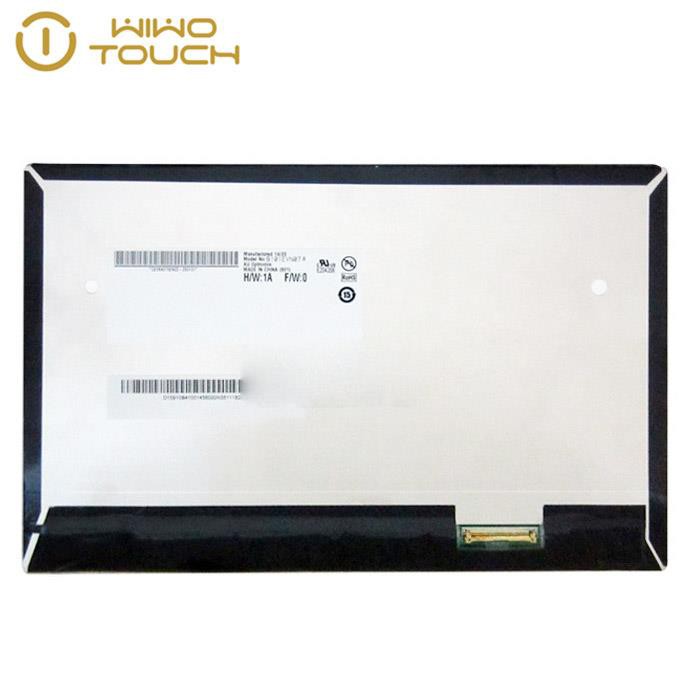Hey there! I'm a supplier of tape touch screens, and today I wanna chat about something super important in our field: how tape impacts the touch screen's electromagnetic interference.
First off, let's get into what electromagnetic interference (EMI) is. In simple terms, EMI is the disruption that occurs when an electromagnetic field messes with an electrical circuit. For touch screens, this can lead to all sorts of problems, like inaccurate touch responses, ghost touches, or even complete malfunctions. And tape, which is often used in the assembly and protection of touch screens, can play a big role in either reducing or increasing this interference.
One of the main ways tape affects EMI is through its material properties. Different types of tape are made from various materials, each with its own electrical characteristics. For example, some tapes are conductive, meaning they can carry an electrical current. These conductive tapes can be used to create a shield around the touch screen, which helps to divert electromagnetic waves away from the sensitive components of the screen. This is especially useful in environments where there's a lot of electromagnetic noise, like near power lines or electronic equipment.
On the other hand, non - conductive tapes can also have an impact. They can act as insulators, preventing the flow of electrical current and reducing the chances of electrical arcing or short - circuits that could cause EMI. However, if these non - conductive tapes are not properly applied or if they have defects, they might actually trap electromagnetic fields within the touch screen assembly, leading to increased interference.
Let's talk about the application of tape. How we put the tape on the touch screen matters a great deal. If the tape is applied unevenly, it can create gaps or air pockets. These gaps can allow electromagnetic waves to penetrate the touch screen's protective layers, causing interference. For instance, if the tape is used to seal the edges of a touch screen and there are small gaps at the corners, electromagnetic radiation can seep in and disrupt the normal operation of the screen.
Also, the thickness of the tape is a factor. A thicker tape might provide more insulation and shielding, but it could also add more bulk to the touch screen assembly. This extra bulk can affect the touch screen's sensitivity and responsiveness. Thinner tapes, while they might not offer as much protection against EMI, can keep the touch screen sleek and more responsive. It's all about finding the right balance.
Now, I'd like to mention some of the touch screen products we offer. We have some great 10.1 Inch TFT Active Matrix LCD options. These displays are known for their high - quality visuals and reliable performance. The tapes we use in the assembly of these touch screens are carefully selected to minimize electromagnetic interference, ensuring that the display works smoothly and accurately.
Another product is our 10.1 Inch TFT LCD Made In CN. These touch screens are made with precision and attention to detail. The tape application on these screens is done in a way that provides optimal protection against EMI, while also maintaining the overall quality and functionality of the display.


And let's not forget our 10.1 Inch TFT LCD Ips Display. The IPS technology offers wide viewing angles and excellent color reproduction. The tapes we use in these displays are chosen to complement the advanced features of the IPS technology, ensuring that there's no interference that could degrade the visual experience.
When it comes to reducing EMI in touch screens, testing is crucial. We conduct a series of tests on our touch screens with different types of tape to see how they perform. We use specialized equipment to measure the level of electromagnetic radiation emitted by the touch screen and to check for any signs of interference. This allows us to fine - tune the tape selection and application process to get the best results.
In addition to the tape itself, the environment in which the touch screen is used also matters. High - humidity environments can cause the tape to lose its adhesive properties over time, which might lead to gaps and increased EMI. Extreme temperatures can also affect the performance of the tape and the touch screen. For example, in very cold temperatures, the tape might become brittle and crack, allowing electromagnetic waves to enter the touch screen assembly.
As a tape touch screen supplier, we're constantly researching and developing new ways to minimize the impact of tape on EMI. We're working with material scientists to find tapes with better electrical properties and more reliable adhesive qualities. We're also improving our manufacturing processes to ensure that the tape is applied more accurately and consistently.
If you're in the market for high - quality touch screens with minimized electromagnetic interference, we'd love to have a chat with you. Whether you're a manufacturer looking to integrate our touch screens into your products or a business in need of reliable displays for your operations, we can offer you solutions that meet your specific requirements. Contact us to start a procurement discussion, and let's work together to find the perfect tape touch screen for your needs.
References
- Smith, J. (2020). "Electromagnetic Interference in Electronic Displays". Journal of Display Technology.
- Brown, A. (2021). "The Role of Tape in Touch Screen Assembly and EMI Reduction". Electronic Components Magazine.




